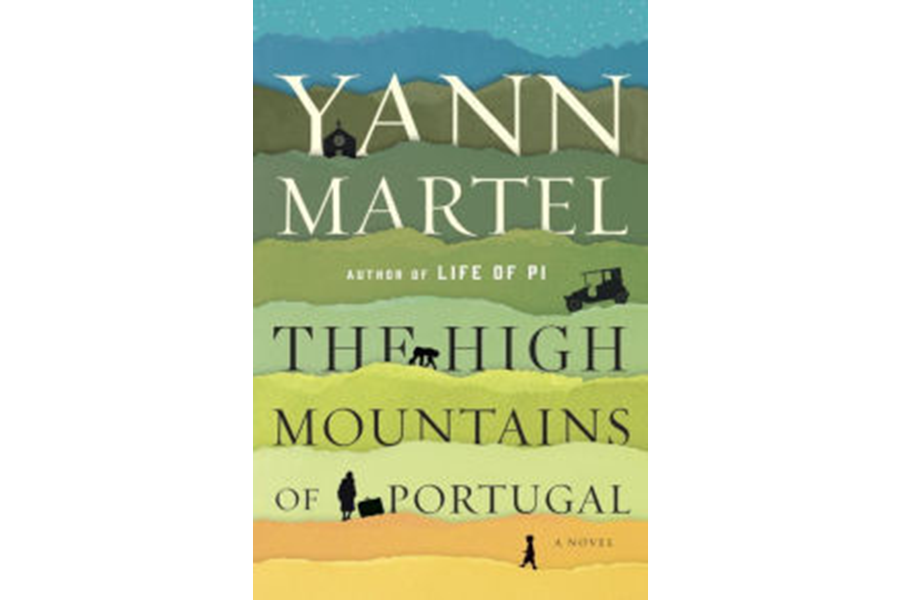'The High Mountains of Portugal': Booker Prize-winner Martel charms again
Loading...
Tomás Lobo walks backward everywhere through the streets of Lisbon. While the high-stepping young man carrying a cane with a mirror attached might look like an early applicant for the Ministry of Silly Walks, there is nothing funny about Tomás’s life in The High Mountains of Portugal, Yann Martel’s new novel of three interlinked stories set across the 20th century.
It’s 1904 and in “Homeless,” the young man has lost everyone he loves to illness: his father; his lover, Dora; and their small son. Without them, the museum employee cannot take even a step forward, instead always facing toward a happier past.
“To be so assailed by tragedy! Some people never laugh again. Others take to drink. My nephew, in his case, chose to walk backwards,” his wealthy uncle and benefactor explains. “Walking backwards, his back to the world, his back to God, he is not grieving. He is objecting.”
Tomás plans to embark on a pilgrimage to Portugal’s remote mountain villages, in search of a holy relic he is sure is hiding there. Tomás, who brings new meaning to the word hapless during the course of his journey, has discovered a forgotten priest’s journal from the 1600s. Father Ulisses was sent to Angola, where he longed to allay some of the cruelty he witnessed there. “I come not to shepherd the free, but the unfree. The first have their own church. My flock’s church has no walls & and a ceiling that reaches up to the Lord,” Father Ulisses writes. Failing to counter the horrors of slavery with faith, he crafts a unique crucifix that, in his words, “shines, it shrieks, it barks, it roars.” Tomas is certain Father Ulisses’s cross made it back to Portugal, and he thinks he has enough clues to be able to find it.
It’s easy to understand Tomás’s obsession, as Father Ulisses voices a grief as deep as his own. “A darkness blooms in me, a choking algae of the soul,” the priest writes. Then later, “The sun brings no solace, nor does sleep. Food no longer sates me, nor the company of men. Merely to breathe is to display an optimism I do not feel.”
Martel counters all the loss with Tomás’s slapstick adventures in his uncle’s car, which he can barely get out of first gear. This frankly can grow tiresome – until the novella’s poignant conclusion.
In the second, more powerful tale, an exhausted pathologist is working late one night in 1938, finishing the autopsy of a drowned woman. “Every dead body is a book with a story to tell,” Dr. Eusebio Lozora believes. But his work is interrupted by two visitors.
His first late-night visitor is his wife, who brings wine, books, and a theory tying Jesus’ life and parables to the work of Agatha Christie, which they both love. “Why would Jesus speak in parables?” Maria asks during her opening salvo. “Why would Truth use the tools of fiction?” She posits that the plainest way to describe the crucifixion is as a murder mystery. “A life was taken, the victim completely innocent. Who did it? Who had the motive and the opportunity? What happened to the body? What did it all mean?”
The second visitor could be straight out of one of Christie’s mysteries: A woman dressed in black arrives, with a body in a suitcase. However, this particular appointment with death quickly takes a turn for the surreal – ending up less Christie than Dalí.
“The sad fact is that there are no natural deaths, despite what doctors say,” Maria tells her husband. “Every death is felt by someone as a murder, as the unjust taking of a loved being. And even the luckiest of us will encounter at least one murder in our lives: our own.”
And in the third, most charming novella, “Home,” a Canadian politician decides to trade Toronto for a remote Portuguese village in 1981, settling in to retirement with an unusual roommate. This last story has a sweetness to the narrative that offers a counterbalance to the earlier pain, and Martel links Peter Tovy to Tomás’s story and Dr. Lozora’s in ways that feel thoughtful rather than contrived.
How the novellas are connected is best discovered during the reading, but the final result is a meditation on grieving and faith that makes for Man Booker Prize winner Martel’s most satisfying book since “Life of Pi.”








